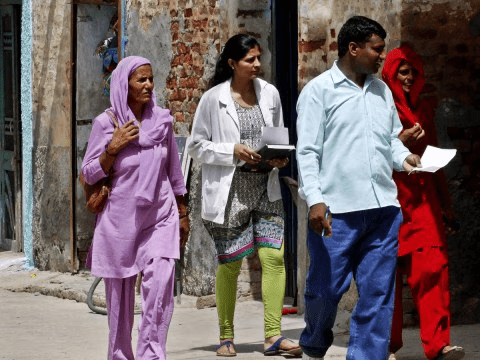Indian Express Editorial Analysis
06 March 2025
The Delimitation Promise
(Source – Indian Express, Section – The Ideas Page – Page No. – 11)
Topic : GS2- Functions and responsibilities of the Union and the States
Context: Issues aside, why delimitation is needed.
Introduction: Despite its central role in the democratic theory of political equality, the process of delimitation often grapples with a lingering democratic paradox in large republics, which face the challenge of balancing conflicting territorial, demographic, ethnic, and factional political considerations.

Historical Context and Constitutional Framework
- Constitutional Mandate
- Delimitation is mandated under Article 82 of the Indian Constitution.
- It is conducted by an independent Delimitation Commission to ensure fair parliamentary representation.
- Freeze on Delimitation
- Frozen since 1976 (42nd Constitutional Amendment) to avoid penalizing states with controlled population growth (e.g. southern states).
- Extended until 2026 in 2001, creating malapportionment (e.g. Uttar Pradesh and Bihar underrepresented; Tamil Nadu and Kerala overrepresented).
- Current Status: Next delimitation exercise due in 2029, sparking fears of a power shift toward the Hindi heartland.
North-South Divide: Demographic and Socio-Economic Tensions
- Demographic Imbalance
- Northern states (e.g. UP, Bihar) have higher populations but fewer seats.
- Southern states (e.g. Tamil Nadu, Kerala) have smaller populations but more seats due to the freeze.
- Socio-Economic Disparities
- Southern states outperform the North in per capita income, infrastructure, healthcare, education, urbanization, and life expectancy.
- Fiscal Burden: Southern states contribute more to central taxes but feel they subsidize northern states’ population growth, unemployment, and underdevelopment.
- Red Queen Effect: Delimitation risks worsening inequalities if northern states’ population growth and economic gaps are unaddressed.
Implications of Delimitation
- Women’s Representation
- Women’s Reservation Bill (2023): Proposes reserving 1/3rd of parliamentary seats for women.
- Implementation delayed until post-2029 delimitation, stalling gender parity.
- Impact on Marginalized Communities
- SCs/STs
- Seat reservations based on 2001 Census data, ignoring population growth (e.g., Bihar’s SC population rose from 15.9% to 19.65%).
- Leads to underrepresentation of growing communities.
- Migrants and Minorities: Delimitation could marginalize socio-religious minorities and internal migrants.
- SCs/STs
- Gerrymandering Risks: Potential for creating permanent political majorities or distorting intrastate representation.
Global Perspectives and Judicial Role
- International Examples
- New Zealand/South Africa: Clear constitutional frameworks for delimitation.
- India/Japan: Managed through ordinary legislation.
- Judicial Interventions
- Meghraj Kothari Case (1966): SC upheld delimitation orders’ finality to avoid election delays.
- J&K Delimitation (2023): Petitions dismissed despite claims of minority marginalization.
Way Forward: Proposed Solutions and Recommendations
- Expanding Lok Sabha: Political scientist Alistair McMillan suggests increasing seats to accommodate demographic shifts without reducing southern representation.
- Reforming Rajya Sabha: Milan Vaishnav proposes using the Rajya Sabha to counterbalance northern dominance in Lok Sabha.
- Devolution of Power: Link delimitation to subnational empowerment to enhance participatory democracy.
- Equality of Conditions: Focus on empowering women and lower castes, aligning with Alexis de Tocqueville’s vision of gradual equality.
Conclusion:
The delimitation exercise in India is a complex interplay of demographic data, constitutional law, and political interests, all of which must be navigated carefully to ensure fair and equitable representation in the electoral system. Delimitation has the potential to enhance the quality of India’s electoral democracy and rejuvenate its democratic longevity in the long term.


